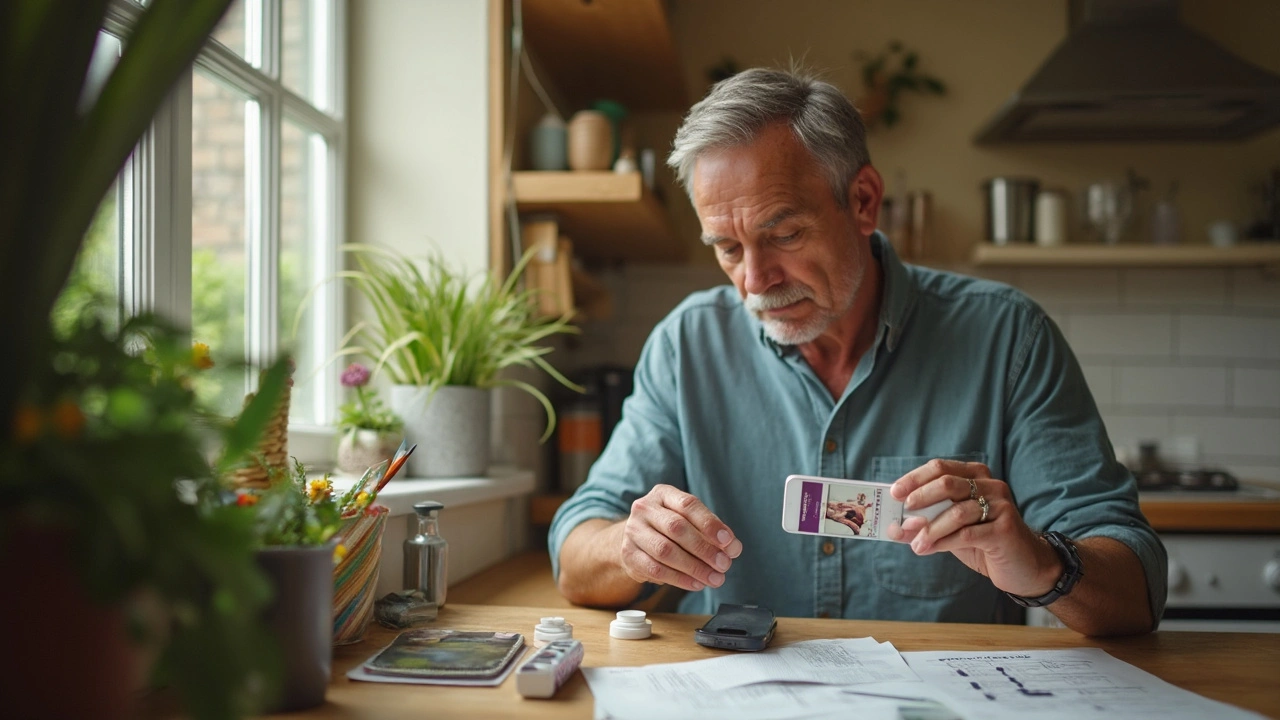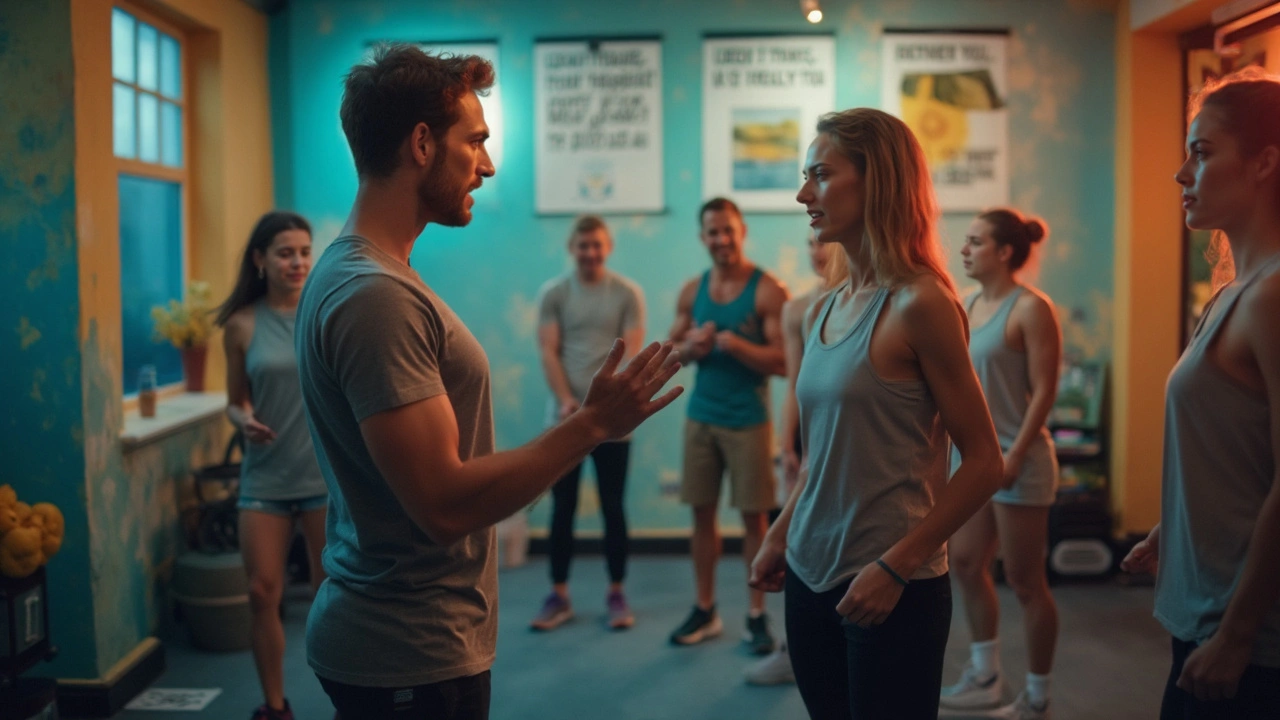It’s 2025, and thanks to modern medications, a diagnosis of HIV isn’t the terrifying sentence it once was. Medications like ritonavir are changing lives every single day. But here’s the kicker: while pills can help keep the virus in check, simply sitting on the couch won’t get you far. The real game-changer? Adding regular, thoughtful exercise into the mix. Most folks don’t realise that exercise is as crucial as any tablet, especially for those on ritonavir. It’s not just about vanity or fitness trends, either—it’s about giving your immune system exactly the support it needs, improving mood, and taming those frustrating side effects that sometimes come with medication. So, what really happens when these two worlds—medication and movement—collide for people living with HIV? Let’s lift the lid and get practical.
Understanding Ritonavir: More than Just a Pill
Ritonavir belongs to a group of HIV medicines called protease inhibitors. Doctors usually use it with other drugs to boost their strength—it acts like a “bodyguard,” making those medications last longer in the bloodstream. Here’s a wild fact: even though ritonavir was first used on its own, these days it’s mostly the sidekick. The initial high dose caused loads of tricky side effects, but lower, booster doses came along, and suddenly lots more people could stick with their regimens. Science has shown that sticking to HIV meds keeps you healthier and stops the virus from sneaking up. That’s the cold, hard truth.
The other detail? Ritonavir sometimes makes people feel a bit rubbish—think stomach upsets, odd changes in the way your body handles fat, and sometimes muscle pain or tiredness. No one wants their medicine to make them feel worse than the condition itself, so most people on ritonavir look for ways to feel and function their best every single day. That’s where a targeted approach—hint: exercise, but the right kind—can step in and lighten the load. But you definitely want to know more: Is it actually safe, and what should you watch out for?
How Exercise Supercharges Health in People with HIV
Everyone’s heard that exercise is good for you. But for someone living with HIV, the effects go way beyond fitting into last year’s jeans. Research out of Sydney’s own St Vincent’s Hospital showed something powerful—when patients on antiretrovirals (including ritonavir) started exercising regularly, their immune cells (those famous CD4 cells) held steady or even improved. Exercise didn’t just boost physical fitness, it gave mental health a lift too, with fewer bouts of depression and anxiety. That’s no small thing in the long-term game of living with a chronic condition.
Doctors aren’t talking Navy SEAL-level boot camp, either. Moderate-intensity activities—think brisk walking, cycling, swimming laps, or even a regular home workout with basics like push-ups and squats—can do wonders. The magic happens when you keep it consistent. Committing to 30 minutes most days of the week isn’t as hard as it sounds, and you’re less likely to experience flare-ups of fatigue, sore muscles, or medication side effects. In fact, for people on ritonavir, regular movement can help with that weird fat redistribution effect (lipodystrophy) and actually improve cholesterol and blood pressure.
Here’s where things get extra interesting: studies show that exercise strengthens the immune system by reducing inflammation, which is a massive deal in HIV. Why? HIV and its treatment can put you at extra risk for heart problems and metabolic stuff like diabetes. Movement chills out the inflammation, lessens joint pain, and helps your body use insulin better. Feeling sluggish, anxious, or isolated? Exercise can help tackle every single one of those head-on. Here’s a quick look at the measurable benefits seen in Sydney-based HIV clinics over the last decade:
| Exercise Routine | CD4 Cell Change | Mood (Depression Score) | Cholesterol Drop | Reported Side Effects |
|---|---|---|---|---|
| 30 min, 5x/week | +10% within 6 months | -25% improvement | -1.0 mmol/L | 30% fewer complaints |
| Inactive (0-1x/week) | Stable or -5% | No change | No change | More fatigue/bloating |
This table just drives home the point: steady moderate exercise can tilt life with HIV in a much better direction, especially for anyone taking ritonavir.

Smart Exercise Tips When Taking Ritonavir
Let’s keep it practical. Not every gym routine fits every body, and being on ritonavir means you want to keep a few things front of mind. Here are the strategies that work for real people, especially in places like Sydney where you might hit Bondi Beach one day and a cosy indoor pool the next.
- Start slow, build up: If you’ve been less active, begin with 10-minute walks. Your joints and muscles need time to adjust, especially since ritonavir can bring on aches or stiffness.
- Mix it up: Aerobic (walking, cycling) and resistance (weights, bands, or body weight) exercises together work best. The combo helps balance strength and endurance without overloading your heart or muscles.
- Hydrate: Ritonavir sometimes affects your digestion, so drinking enough water really does matter—more so if you’re sweating it out on Sydney’s sunny days.
- Stretch those shoulders and hips: Lipodystrophy (the medicine-triggered fat changes) often sneaks up around these spots. A gentle stretching routine tackles tightness and keeps you moving.
- Check your feet: Some people on HIV meds get numbness or tingling (neuropathy), so make sure your footwear is solid, and don’t ignore any weird new pains.
- Listen to your appetite: Some HIV meds mess with taste or appetite. Eating a decent snack after workouts can stop you from feeling lightheaded, especially if you’re on meds that drop your blood sugar.
- Talk to your specialist: Always tell your HIV doctor about any new exercise plan—they’ll clue you in if there’s something to tweak with your meds or routine.
- Track your progress: Jot down how you feel, your energy, and any symptoms over time—not for punishment, but to celebrate every little win.
People often ask: can I overdo it? Sure, just like anyone else—but for most, the main risk is going too hard, too soon and ending up sore or exhausted. There’s no medal for burning out; slow and steady wins here, every single time.
The Science Behind Exercise and HIV: Myths vs. Facts
Myths about HIV never really die, and there are plenty about exercise, too. Some folks are convinced working out will ‘wear down’ their immune system, but the truth is the complete opposite. Studies at the Kirby Institute and UNSW found repeated evidence: moderate, regular exercise boosts natural killer cells and helps your body fight everyday germs. No, you’re not making yourself more vulnerable by lifting weights or doing yoga. In fact, people who move more have better sleep, steadier moods, and fewer flares of common cold viruses.
Still, that doesn’t mean living in the gym. Overtraining—like marathon-levels of running day after day—can stunt recovery and, yes, make you pick up germs more easily. But you don’t need that to get the benefits. Most Sydney clinics suggest hitting the sweet spot: moderate-intensity activity, three to five times a week, plus a couple of short walks on the side. That routine gives the immune system the boost it loves.
Here’s another fact: exercise can actually help with some odd side effects of ritonavir, like cholesterol spikes or mild insulin resistance. Move more, and you’ll probably see better numbers at your next blood test. That pesky ‘HIV belly’ that some patients fear? It only really gets worse if you’re sedentary. Patients who stick to a routine—think swimming, pilates, or gym group classes—almost always tell their doctors their body image and self-confidence improves too. Pretty cool side effect, right?
What about older adults, or those who haven’t exercised in years? The science is clear: it’s never too late to start, and even basic routines (like getting off one bus stop earlier and walking) can add months, even years, to life. There’s no fitness police checking your reps; what matters is getting moving in a way that works for you and being kind to your own pace.

Staying Motivated and Keeping Safe: Real-World Advice
Let’s be honest: motivation comes and goes. Some days you’re raring to smash out a run, other days just making breakfast feels like a win. People living with HIV face the same ups and downs, plus the unpredictable curveballs from medication side effects. What works to keep people on track isn’t superhuman willpower—it’s finding a routine that makes sense and feels doable, rather than another obligation on the to-do list.
It helps to team up. This could be a walking buddy from your street, or joining a community group with others managing long-term conditions. Sydney has groups from Bondi Beach fitness meet-ups to gentle yoga sessions tailored for people living with chronic illness. The social side makes all the difference—suddenly exercise doesn’t feel lonely (or like punishment), and you actually look forward to catching up and moving together.
There’s also the mindful side of things. Exercise is a natural stress-buster, which is huge for anyone juggling regular medication, doctor’s appointments, and everyday stress. The research is on your side. People who move more tend to be less anxious about their health, sleep better at night, and report much higher energy by day. Quality of life isn’t just about numbers—it’s whether you feel up for catching the ferry, making a Sunday dinner, or heading to work, all without constantly feeling wiped out.
As you go, keep these ground rules in mind to stay safe:
- Always warm up—gentle stretching before and after is your insurance policy against muscle pulls.
- Know your body—if joint pain, severe fatigue, or dizziness crop up, stop and get advice. Side effects like dehydration or digestion issues can sneak up, so keep water handy and don’t ignore small warning signs.
- Check meds regularly—sometimes ritonavir dose changes or tweaks are needed if you’re being a lot more active. Only your doctor can fine-tune this, so keep track of any new symptoms.
- Try interval routines—a burst of activity, followed by easy movement, works better for energy and endurance (plus, it keeps things interesting).
- Celebrate everything—even short walks or a stretching session counts. Progress isn’t linear; it’s about showing up, even on days it feels hard.
Right now, research from the Australian Positive People Foundation shows that 80% of people with HIV who exercise regularly rate their quality of life as ‘good’ or ‘excellent’, compared to only 50% among those who don’t. That’s not a small difference, and it’s something worth aiming for every single day.
Patrick Goodall
May 19, 2025 AT 19:42liam coughlan
May 19, 2025 AT 22:57Maeve Marley
May 20, 2025 AT 20:37James Gonzales-Meisler
May 21, 2025 AT 13:36Navin Kumar Ramalingam
May 21, 2025 AT 21:23Shawn Baumgartner
May 21, 2025 AT 23:30Cassaundra Pettigrew
May 23, 2025 AT 17:08Brian O
May 24, 2025 AT 05:44Steve Harvey
May 26, 2025 AT 00:13Gary Katzen
May 27, 2025 AT 10:17